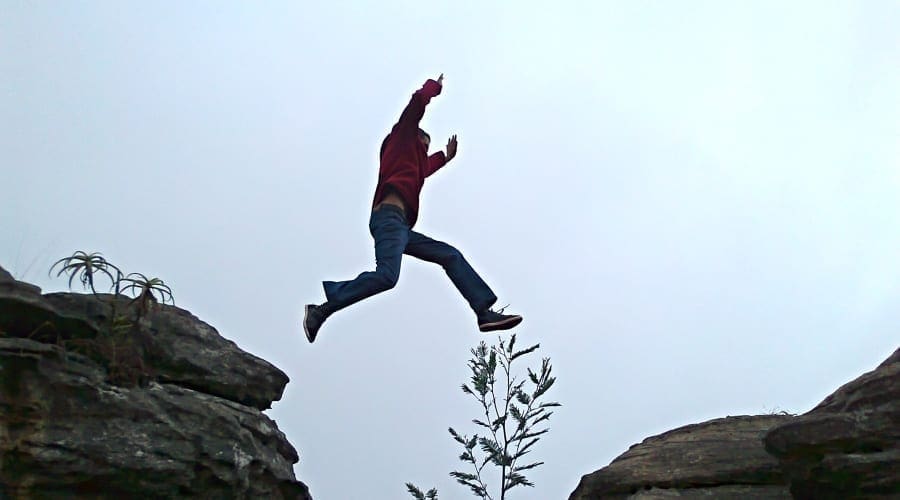“Pastor, can I have a word with you?”
Some years ago, one of the ladies in my church posed this question to me on a Sunday morning.
She entered my study and said, “I have two items on my nightstand: a Bible which I read every night and a picture of my son for whom I pray every night. And Preston, he’s gay.”
Just saying those words to me came at a price for her.
She regrouped herself and continued, “There have been nights when I wondered if both my Bible and my son could fit on my nightstand. There have been nights when I wondered if both of them could fit in my heart. There has always seemed to be an invisible chasm between them.”
“But this week, in my prayers, the Spirit of God asked me, ‘What chasm haven’t I crossed? What chasm won’t I cross?’ And for the first time in my life, I’ve realized that there is room for BOTH my son and my Scriptures in my life. In fact, the one has everything to do with the other,” she said.
The chasm that ran across this woman’s nightstand and through her heart is running down the center aisle of most congregations today.
On the one hand, some people appeal to the “plain reading of Scripture” on these matters as well as biblical authority and the grand theological tradition of the church.
On the other hand, others look to the love of neighbor, the ongoing witness of the Spirit in Scripture and beyond Scripture, and the burgeoning trajectory of the science of human sexuality.
It feels like the Bible is on one side of the debate and pictures of loved ones are on the other. How does a Jesus follower choose between the two?
In 2015, Second Baptist Church in Little Rock, Arkansas, decided to begin a discernment process about our practices toward LGBTQ people in our midst.
We saw a missional impetus to do so because so many homeless youth are LGBTQ, having been expelled from their homes.
We felt a pastoral impetus because these folks were sitting in our pews. We perceived a prophetic impetus because justice was at stake.
And while there were millions of reasons not to have the conversation, the triumph of love over fear outweighed them all.
After studying, discussing, praying and listening for about three years, Second Baptist discerned that LGBTQ people should be totally affirmed in our congregation.
This means they are fully a part of our community, held to the same standards and privy to the same opportunities as everyone else.
We decided to study the Bible more, not less, thinking more deeply about its historical and social contexts.
We decided to talk about sex more, not less, because precious few people can articulate a sex ethic of any sort in our culture.
And because sexual attractions (and sexual repulsions) derive from the deepest places of our being, places deeper than the rationale, we committed ourselves to do the hard work of the soul, not just informing the brain.
In this process, we discovered something we had overlooked in one of the most famous texts of Scripture.
In the lead up to the parable of the Good Samaritan in Luke 10, a lawyer asks Jesus, “What is the greatest commandment?”
Jesus responds, “What is written in the law? How do you read it?” (Luke 10:25-26).
That’s the first question, “How do you read it?” It’s a question of biblical interpretation and interpretive hermeneutics. “How do you read it?”
Then, Jesus tells the story of the Good Samaritan, who crosses all bounds to save the vulnerable man in the ditch. At the end of the story, Jesus asks the question, “Who acted as a neighbor in this story?”
Can you see it? The question “How do you read it?” gives way to the question, “Who is my neighbor?” The one has everything to do with the other.
How you answer one of those questions will dramatically impact how you live out the other.
We should always rest our Bibles next to a picture of someone. Jesus himself joins them together. There is not a chasm between the Bible and our neighbor if we’re reading either faithfully.
The perception that truth and love are opposites somehow is really, really bad framing, and good choices cannot spring from bad framing.
There was room on that woman’s nightstand for both her Bible and her son. There is room in our hearts for both. And there is room at Second Baptist Church of Little Rock for both. We believe Jesus would have it no other way.
It might just be time for your congregation to explore that chasm as well. You might just rediscover that the Spirit of God continues to cross them.
Editor’s note: This article is part of a weeklong series. Other articles in the series are:
The Experience of Christian Parents of a Christian Gay Child by Greg and Kelly Otis


